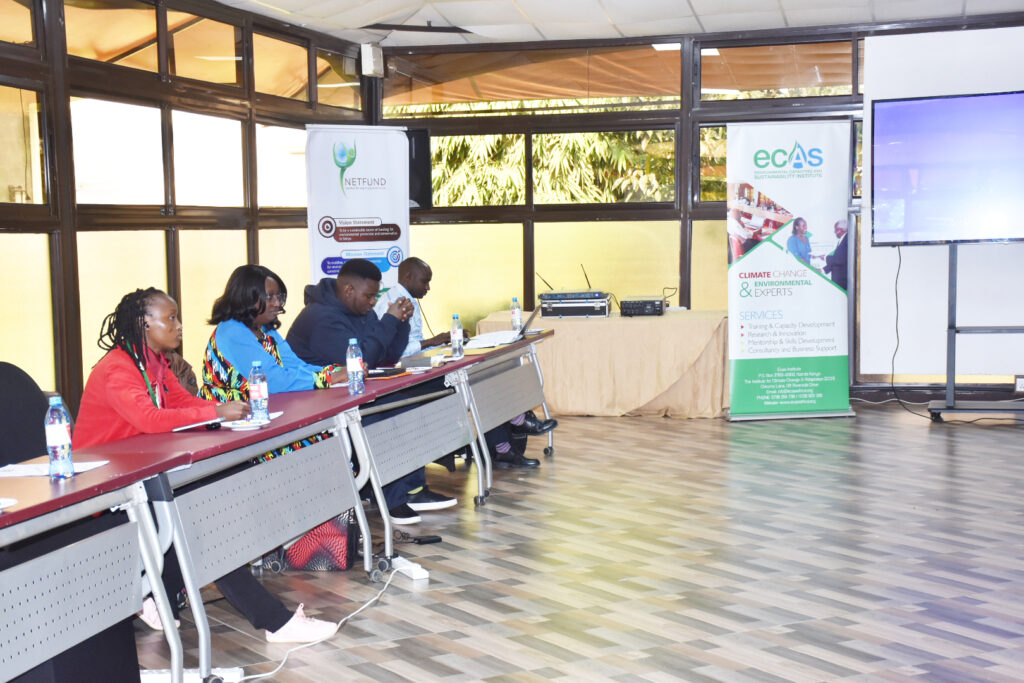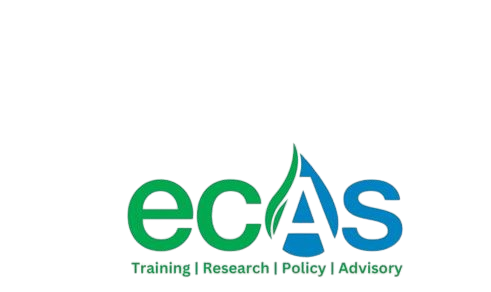
INTERNATIONAL TRAINING ON FLOOD AND DROUGHT RISK ASSESSMENT & MANAGEMENT
COURSE BACKGROUND
Floods and droughts represent two sides of the same extreme hydrological coin, both intensified by climate change and posing significant threats to lives, livelihoods, and economies worldwide. East Africa, including Kenya, is particularly vulnerable to these hydro-climatic extremes. Recurrent droughts lead to widespread food insecurity, water scarcity, and humanitarian crises, especially in arid and semi-arid lands (ASALs). Conversely, devastating floods disrupt infrastructure, displace communities, and cause substantial economic losses in urban and rural areas. Moving beyond reactive disaster response to proactive risk assessment and integrated management is crucial for building resilience and ensuring sustainable development. This requires a comprehensive understanding of the science behind these hazards, the methodologies for assessing their risks, and the implementation of effective prevention, preparedness, and mitigation strategies.
ECAS Institute offers this “Flood and Drought Risk Assessment & Management” course to equip professionals, policymakers, disaster managers, water engineers, urban planners, and community leaders with the essential knowledge and practical skills to understand, assess, and manage the escalating risks posed by floods and droughts. This program will provide a holistic framework for integrating risk assessment with strategic management measures, fostering a shift from crisis management to proactive disaster risk reduction (DRR) and climate change adaptation.
COURSE OBJECTIVES OF THE TRAINING
Upon successful completion of this course, participants will be able to:
- Explain the hydrological and meteorological drivers of floods and droughts and their increasing frequency/intensity due to climate change.
- Conduct comprehensive flood and drought risk assessments, including hazard, exposure, and vulnerability analysis.
- Apply tools and methodologies such as GIS, remote sensing, and hydrological modeling for risk mapping and assessment.
- Develop and implement a range of structural and non-structural measures for both flood mitigation and drought preparedness.
- Design and operate effective early warning systems for both flood and drought events.
- Integrate community-based approaches and local knowledge into risk assessment and management strategies.
- Understand the policy, legal, and institutional frameworks necessary for integrated flood and drought management.
- Formulate adaptive management plans that enhance resilience to future hydro-climatic extremes.
WHAT YOU WILL LEARN
This course will provide you with a critical and actionable understanding of managing hydrological extremes, enabling you to build more resilient communities and infrastructure. You will learn to:
- Identify and characterize different types of floods (e.g., flash floods, riverine floods, urban floods) and droughts (e.g., meteorological, agricultural, hydrological, socio-economic).
- Utilize relevant climate data and hydrological models to predict and forecast flood and drought events.
- Map floodplains and drought-prone areas using geospatial techniques.
- Assess the vulnerability of communities and assets to both flood and drought impacts.
- Design multi-sectoral flood mitigation strategies, including land-use planning, drainage improvements, and green infrastructure.
- Develop robust drought preparedness plans, including water conservation, demand management, and diversified livelihoods.
- Implement and evaluate early warning systems (EWS), ensuring timely and effective dissemination of information to vulnerable populations.
- Integrate disaster risk reduction (DRR) and climate change adaptation (CCA) principles into water resource management.
- Engage stakeholders and foster community participation in local flood and drought resilience building efforts.
- Analyze relevant national policies (e.g., Kenya’s National Disaster Risk Management Policy) and international frameworks.
DURATION AND PROGRAM
This is a structured training course designed to provide a deep dive into the practical aspects of flood and drought risk management. The program will feature a blend of expert lectures, interactive workshops, practical exercises (e.g., using GIS for mapping, interpreting hydrological data), case studies (drawing heavily on regional challenges and successful interventions in Kenya and other East African countries), and group discussions. Participants will engage in hands-on development of risk assessment frameworks and management plans. The detailed program schedule, including specific session timings and learning activities, will be communicated upon registration.
TARGET PARTICIPANTS
This course is crucial for professionals involved in disaster management, water resources, urban planning, agriculture, and climate adaptation. It is highly beneficial for:
- Disaster Risk Reduction (DRR) Professionals
- Water Resource Managers and Planners
- Hydrologists and Meteorologists
- Environmental Scientists and Managers
- Urban and Rural Planners
- Agricultural Extension Officers
- Government Officials from Ministries of Water, Environment, Agriculture, Planning, Interior (Disaster Management).
- NGO and International Organization Staff working on humanitarian aid, development, and climate resilience.
- Engineers and Infrastructure Developers
- Community Leaders and Representatives from vulnerable areas.
TRAINING MODULES
The course is structured to provide a comprehensive and integrated understanding of flood and drought risk assessment and management:
| No | Module | Details | |
| 1. | Understanding Hydro-Climatic Extremes: Floods and Droughts |
This module provides a foundational understanding of the science behind floods and droughts, their types, and the global and regional trends, particularly in the context of climate change.
Key Topics:
|
|
| 2. | Principles of Risk Assessment for Floods and Droughts |
This module introduces the core concepts of disaster risk, including hazard, exposure, and vulnerability, and outlines frameworks for comprehensive risk assessment.
Key Topics:
|
|
| 3. | Data and Tools for Flood and Drought Risk Assessment |
This module equips participants with practical skills in using various data sources and analytical tools for risk mapping and monitoring.
Key Topics:
|
|
| 4. | Flood Risk Management Strategies |
This module covers a range of measures, both structural and non-structural, designed to reduce flood risk and enhance resilience.
Key Topics:
|
|
|
5.
|
Drought Risk Management Strategies |
This module focuses on proactive measures and adaptive strategies to manage water scarcity and mitigate the impacts of drought.
Key Topics:
|
|
| 6. | Integrated Approaches and Community-Based Management |
This module emphasizes the importance of holistic approaches, integrating DRR, CCA, and community participation for effective management of hydro-climatic extremes.
Key Topics:
|
|
| 7. | Governance, Policy, and Financing for Resilience |
This module explores the institutional, legal, and financial dimensions crucial for effective and sustainable flood and drought risk management.
Key Topics:
|
|
TRAINING STYLE
The modules will be taught through PowerPoint presentations, and lectures and will include a case study/field visit, breakout sessions, case studies and other interactive discussion components.
The course will also include a few guest speakers, both in person and via Zoom and other online learning platforms for overseas speakers. This provides useful real-world insights alongside the more theoretical aspects of the course.
The conference faculty shall consist of experienced decision makers, as well as practitioners and representatives from established educational and research institutions active around climate change, engineering and international development. Throughout the course, theoretical presentation of concepts will be moderated and more group discussions and plenary engagements will be optimized. PowerPoint presentations will be made by facilitators and resource persons, to highlight key concepts before embarking on group work.
GENERAL NOTES
- Training manuals and additional reference materials are provided to the participants.
- Upon successful completion of this course, participants will be issued with a certificate.
- We can also do this as a tailor-made course to meet organization-wide needs. Contact us to find out more: info@ecasiafrica.org.
- Payment should be sent to our bank account before the start of training and proof of payment sent to: info@ecasiafrica.org.
ABOUT ECAS INSTITUTE
The ECAS Institute designs and delivers independent and targeted training, research, and consulting services. Our work focusses on climate change and resilience building, carbon markets, renewable energy, nature-based solution, biodiversity conservation, agriculture and food systems, We are located in Nairobi Kenya and work across the African region. We have implemented training and research assignments in Kenya, Tanzania, Uganda, South Sudan, Somalia, Malawi, Rwanda, Congo, and South Africa. Globally, we have supported our partners from the UK, Denmark, Italy, Sweden, Germany, and USA.
